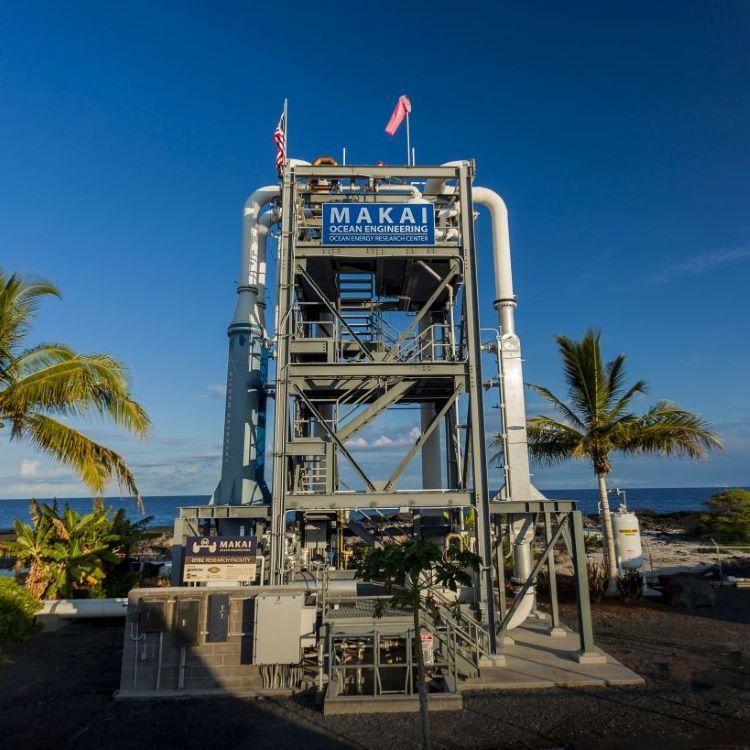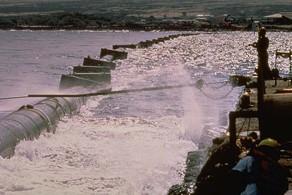Ocean Thermal Energy Conversion (OTEC)
Ocean Thermal Energy Conversion (OTEC) is a process that can produce electricity by using the temperature difference between deep cold ocean water and warm tropical surface waters. OTEC plants pump large quantities of deep cold seawater and surface seawater to run a power cycle and produce electricity. OTEC is firm power (24/7), a clean energy source, environmentally sustainable and capable of providing massive levels of energy.
Recently, higher electricity costs, increased concerns for global warming, and a political commitment to energy security have made initial OTEC commercialization economically attractive in tropical island communities where a high percentage of electricity production is oil based. Even within the US, this island market is very large; globally it is many times larger. As OTEC technology matures, it should become economically attractive in the southeast US.
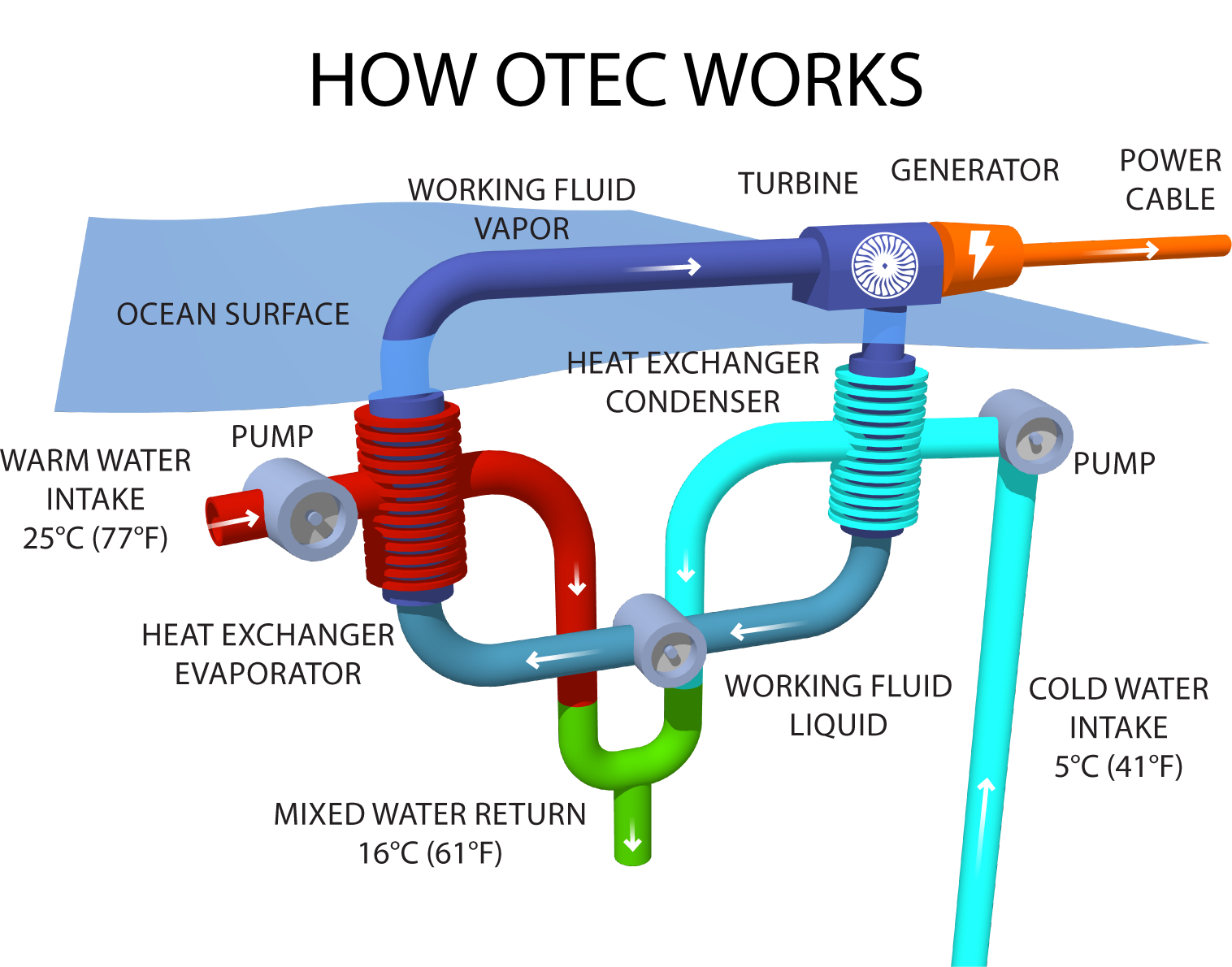

OTEC Technology
Makai has been pioneering OTEC research since working on the first net-power producing plant in 1979. Since that time, Makai has been a sub- or prime contractor for dozens of unique research and development contracts in OTEC. Makai has worked with Lockheed Martin and others in the past pursuing the development of 100 MW OTEC plants for island communities like Hawaii and Guam.
Benefits and Opportunities of OTEC
Immense Resource
OTEC is solar power, using the oceans as a thermal storage system for 24-hour production. Unlike other renewable energies, the maximum available energy from OTEC is not limited by land, shorelines, water, environmental impact, human impact, etc.
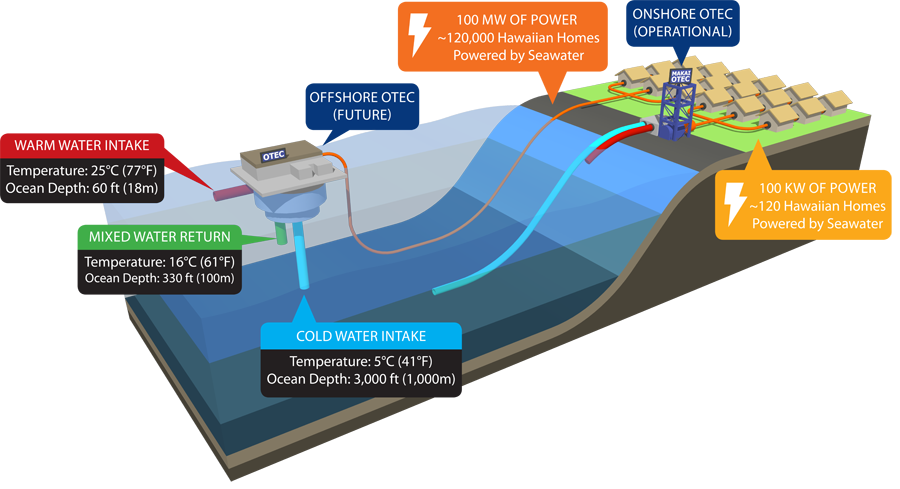
Baseload Power
OTEC produces electricity continuously, 24 hours a day throughout the entire year. Intermittent renewable energy sources are not baseload and often require storage of their energy during peak production hours for later consumption. Large, baseload OTEC plants could actually start to replace fossil-fuel-fired power plants without compromising grid stability.
Dispatchable Power
OTEC is dispatchable, meaning that its power can be ramped up and down quickly (in a matter of seconds) to compensate for fluctuating power demand or supply from intermittent renewables. For this reason, OTEC is complementary to other renewables like solar and wind, and could enable further penetration on the grid while helping to maintain its stability.
Security
OTEC offers the opportunity of tapping an immense energy resource that is not controlled by other nations.
Renewable
Believed to be sustainable at four or more times current total global electrical energy production.
Low Risk
Conventional Closed Cycle OTEC is a low-risk.
Clean Energy
OTEC has the potential of being a very clean alternative energy – unique for a firm power source capable of providing massive energy needs. The environmental risk with OTEC is very low.
Offshore
OTEC production occurs offshore. Land resources are not needed other than for on-shore landing. OTEC is not competing for other vital resources such as food and fresh water.
OTEC’s Challenges
The problem with this remarkable renewable energy is cost. OTEC has not yet been built commercially because it is up against the economies of scale. It has long been believed that the smallest commercially viable OTEC plant would be approximately 100 MW. With Makai’s recent advancements in heat exchanger design, and the invention of the Thin Foil Heat Exchanger (TFHX), it is believed that OTEC could be profitable as low as 10 MW for the right location.
At present, OTEC plants can be built that will be economically attractive to Hawaii, Puerto Rico and Guam (at electrical rates just above twenty cents per kWh range without energy credits). Makai Ocean Engineering performed a study for Office of Naval Research looking at an offshore OTEC industry providing energy to the continental US via ammonia as an energy carrier. These future OTEC prices are slightly high, but close to competing with other renewables and with overlapping margins of error.
Related Technologies
Makai’s engineers are experts in OTEC and the technologies that are leveraged in the design and development of the enabling technologies such as large diameter pipelines and heat exchangers. Additionally, Makai has been a world recognized leader in Seawater Air Conditioning (SWAC), which is another renewable energy technology that uses deep seawater, similar to OTEC.
Ocean Energy Research Center
The Ocean Energy Research Center (OERC) in Kailua-Kona, Hawaii, USA is a unique and critical research facility dedicated to demonstrating and improving technology to harness the thermal energy of the ocean. The primary focus is on Ocean Thermal Energy Conversion (OTEC) systems, but research is being done at the Center to support other deep ocean water technologies, including:
-
-
- Seawater Air Conditioning (SWAC)
- Marine heat exchangers for other applications
- Marine Corrosion Research.
-
The OERC is the only research facility of its kind with continuous access to shallow and deep seawater. A turbine-generator has been installed to complete the OERC’s land-based OTEC power plant, supplying closed-cycle OTEC power to the grid for the first time in U.S. history starting late summer 2015.
OTEC Grid-connection Ceremony
Makai added a 105-kW turbine generator to the OERC in August 2015. This is currently the largest grid-connected OTEC plant in the world. This fully functioning OTEC power plant provides several benefits:
-
-
- Development of OTEC power control and automation systems
- Measure the actual versus predicted power output
- Use long-term operational data to improve future commercial OTEC plant designs and cost projections
-
Makai’s OTEC Projects
Makai has more OTEC project experience than any other engineering firm. A summary of some significant OTEC projects Makai has been involved in is included below:
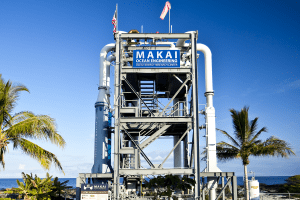
105 kW Pilot Plant
In 2015, Makai connected closed-cycle OTEC power to the U.S. grid for the first time. This project provided significant de-risking of OTEC and proved its viability as a U.S. energy provider.
More Info
This facility is used for the research and development of heat exchangers, the turbine-generator and system controls, corrosion resistant materials and bonding methods, and marine pipelines. The developments resulting from each of these areas are ultimately fed into more cost-effective and technically advanced OTEC power plant designs.
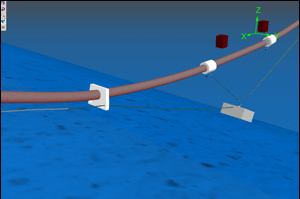
Hawaii – 1 m Pipe Repair
In 2011, Makai performed final design and construction oversight for the repair of a deepwater 40” (1.0 m) diameter HDPE pipe at the Natural Energy Laboratory of Hawaii (NELHA).
More Info
This pipe is a main source of water at NELHA and supplied all of the water for Makai’s 105 kW closed-cycle OTEC power plant. The pipe, originally built for ten year design life, has been in place for over 25 years. The pipe design involves a 915m long floating catenary section from 150m to 670m depth, and several of the chain bridles restraining the pipe had worn from corrosion and continuous motion over the years. Makai simulated the current pipe conditions using Orcaflex 3-dimensional finite element software, simulated repair solutions, and provided final design drawings and specifications. In July 2013, repairs were conducted and Makai provided on-site representation for our client, the State of Hawaii. The repairs were successful, and post-repair measurements showed excellent agreement with Makai’s model predictions and design specifications.
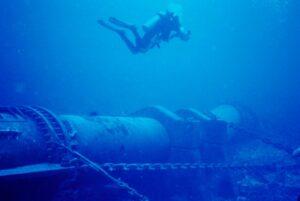
HOST Park Deep Seawater Pipeline
In 2001, Makai engineered the main seawater supply source for the Hawaii Ocean Science Technology Park (HOST Park). This included a cold-water pipeline 55″ diameter, 3000′ deep, and two miles long.
More Info
Makai has engineered the main seawater supply source for the Hawaii Ocean Science Technology Park (HOST Park) at Keahole Point, Hawaii. This supply system consists of a cold-water pipeline (55″ diameter, 3000′ deep, and two miles long), a 55″ diameter warm water intake pipe, a tunneled shoreline crossing, and a shore-based pumping station. The system is the world’s largest and deepest cold-water pipeline and has the capacity to deliver 27,000 gpm of 4 deg. C. water and over 40,000 gpm of warm water to the technology park. Makai received a national award from the American Society of Civil Engineers for this project as one of the six most outstanding CE projects in 2003.
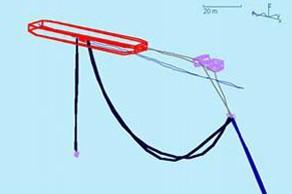
Indian OTEC Pipeline
In 1998, Makai provided conceptual designs and design guidance for an OTEC intake pipeline and mooring system in India.
More Info
Makai was contracted by the National Institute of Ocean Technology (NIOT) in Madras, India, for the conceptual design of the deep water intake pipeline, the effluent pipeline, and the mooring system for an experimental floating OTEC Plant. The analysis included dynamic modeling of pipe bending, shown at right.
The NIOT OTEC barge is scheduled to be 72 meters long and will be supplied 1415 kg/s of deep cold seawater through a 1 meter diameter pipeline from a minimum depth of 1000 meters. The mooring is 1220 meters deep.
NELHA 40″ Cold Ocean Water Intake Pipeline
In 1987, a project funded by the State of Hawaii and the U.S. Department of Energy, Makai designed a 40″ polyethylene cold water pipe to be used jointly by the Natural Energy Laboratory and the Hawaii Ocean Science and Technology (HOST) Park sites on the Big Island. At the time of construction, it was the largest deep-water intake pipeline in the world. This pipe is a main source of water at NELHA and supplied all of the water for Makai’s 105 kW closed-cycle OTEC power plant.
More Info
This pipe is a larger and more rugged version of the previous MOE 12″ pipe design at NELHA and includes a 3000′ long buoyant section. Makai assisted in the deployment of this pipe to a depth of 2200′ in August 1987.
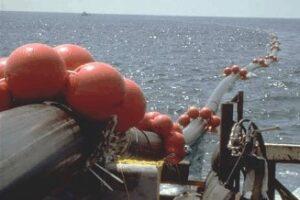
NELHA 18″ Cold Water Pipeline
In 1987, Makai designed and provided construction management for an 18″ down-the-slope cold water intake at the Natural Energy Laboratory of Hawaii.
More Info
The goal was to install a reliable, minimal cost, deep-water intake system to 2000′. This polyethylene design differs from previous NELHA pipelines in that the deep water pipe is buoyed approximately 40′ off the bottom on a series of pendants, the deployment was accomplished without major offshore equipment. This pipeline was successfully deployed in October, 1987, and is still operational.
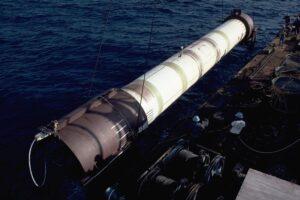
OTEC Pipeline Research
In 1984 Makai was responsible for the concept development, design and deployment planning for an 8′ diameter down-the-slope OTEC pipe test.
More Info
Working under a subcontract to Hawaiian Dredging and Construction, on a NOAA/DOE program, Makai was responsible for the concept development, design and deployment planning for an 8′ diameter down-the-slope OTEC pipe test. Part of the test was the demonstration of diver-free installation techniques suitable for very deep, large diameter pipelines on the steep, 42 degree slope. The concept included a flexible pipe joint that conformed to the bathymetry. Pipe deployment was successfully accomplished as planned using heavy lift barges and closed-circuit underwater television. The design included instrumentation for the measurement of hydrodynamic loads on the pipe after installation. Makai subsequently analyzed the hydrodynamic data from this test project.
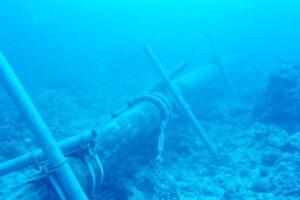
Long Operating OTEC Pipeline
In 1981, Makai conceived, designed and managed the construction of an experimental, polyethylene OTEC pipeline, 12″ in diameter, for the State of Hawaii.
More Info
This one-mile long pipeline has an intake at 2000′ and utilizes a unique 3000′ long free-floating catenary section to avoid contact with the steep, rocky bottom. The pipeline was installed in 1981 off Keahole Point, Hawaii. In spite of its “temporary” design life of 2 years, it has survived many major storms including a hurricane and was operational for over twelve years.
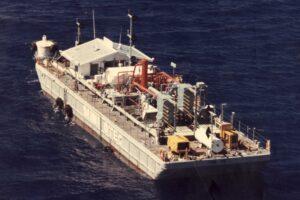
Mini OTEC
In 1979 Makai engineered several portions of the Mini-OTEC project under contract to Dillingham Corp. This was a full OTEC system demonstration.
More Info
This project was a full demonstration of Ocean Thermal Energy Conversion (OTEC) and jointly funded by the State of Hawaii, Lockheed, Dillingham and Alfa Laval. Makai designed a 2′ diameter polyethylene pipe that served not only as an intake pipe from a 2000′ depth, but also as the “mooring line” for the 120′ x 35′ barge. The initial design for the barge layout, seawater intakes (cold and warm), effluent lines, and pumps was also done by Makai. Makai developed and planned the deployment scheme and participated in the at¬sea deployment. On August 2, 1979, Mini¬OTEC produced 50 kW of power and consumed 40 kW, for a net positive output of 10 kW. This was the first time that a positive output had been achieved from any OTEC facility. In 1980, the National Society of Professional Engineers awarded Mini-OTEC as being one of the ten outstanding engineering achievements in the United States that year.
Interested in Makai’s OTEC Services?
ReACH OUT!
Contact us by sending in this form any time you need professional support or have any questions. You can also fill in the form to leave your comments or feedback for Makai’s team.

